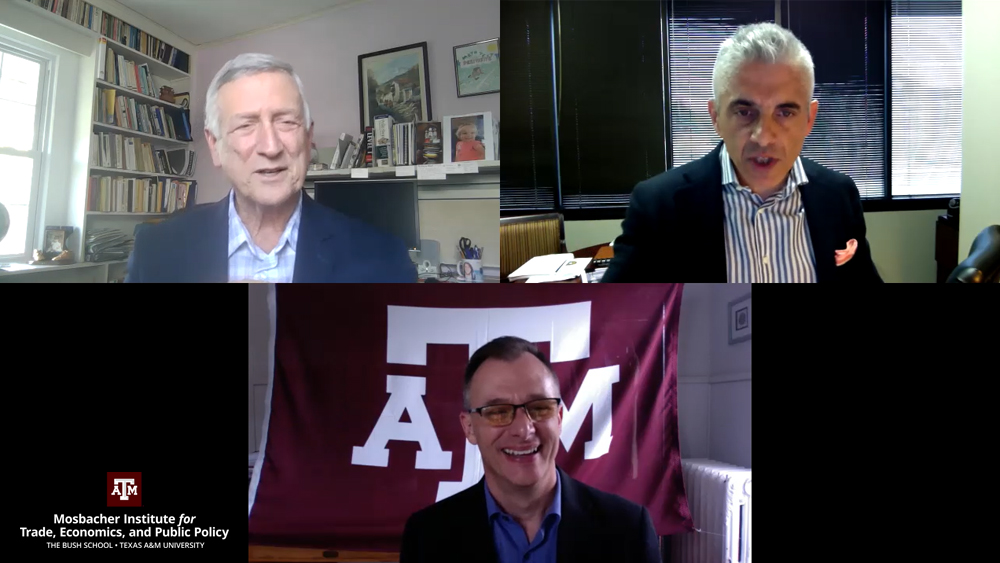
With the impact of the pandemic and its disruptions to global supply chains making secure and resilient supply chains a top US priority, “A Conversation on Global Value Chains: China, COVID, and Resilience” with Dr. Gary Gereffi and Dr. Eleftherios “Lefteris” Iakovou was most timely. The April 8, 2021, policy talk was hosted by the newly created Global Value Chains (GVC) Program within the Mosbacher Institute for Trade, Economics, and Public Policy at the Bush School of Government and Public Service and was moderated by Dr. Raymond Robertson, Director of the Mosbacher Institute. Gereffi is the founding Director of the Duke Global Value Chains Center. Iakovou is the Harvey Hubbell Professor of Industrial Distribution at Texas A&M University and the Director of Manufacturing and Logistics Innovation Initiatives at the Texas A&M Engineering Experiment Station (TEES).
Iakovou began by defining supply chains, their history in globalization, and how they have become vital to both economic and national security. When speaking of globalization, Iakovou specifically referred to trading with, transferring to, and investing in technology in China. He said in 1990, global trade was 39 percent of global GDP, which jumped to 61 percent in 2008 and was 58 percent right before COVID-19. Iakovou explained that the reduction in trade percentage of global GDP was in large part a response to demands for more regionalized supply chains that are closer to the point of consumption and can respond quickly to customer demands. The shock of COVID-19 revealed the importance of supply chains and the risks they present to consumers, US national security, and global competitiveness. Supply chain resilience, he said, refers to the ability of a given supply chain to prepare for and adapt to unexpected events and to quickly adjust and function through disruptions.
Taking a step back, Gereffi described the origins of the GVC framework and analysis. In the early 2000s, a group of researchers from various scholarly backgrounds came together to develop a common framework using a standard set of terms to describe the complex network relationships among firms that span wide geographic areas. This marked the beginning of the Global Value Chains Initiative, and a few years later the Global Value Chains Center (GVCC) at Duke University was created to expand applied research using the framework. Gereffi stressed the importance of using the academic community to drive the work forward and inform global policy. He specifically encouraged academia to bring together different multidisciplinary knowledge communities in order to understand the complexities of multinational companies down to local firms.
When asked about the critical relationship between supply chains and value chains, Gereffi said that value chains add the dimension of power and value to the supply chain base, where industry and product differences matter a lot. In this way, it is no longer only about the rigidity and resilience of the supply chain. GVCs change the focus from the shortage of a product like facemasks to providing all the key inputs for the demanded item. In addition to that, it is important to watch who, like China, can ramp up production at scale quickly, which is why reshoring 100 percent of critical products may not be the correct answer, according to Gereffi. The conversation concluded with both speakers reiterating that universities and institutions play a unique role in providing a meeting ground for a multi-stakeholder initiative of public and private organizations to use GVC analysis to develop forward-looking plans that will shape major policies.
Watch “A Conversation on Global Value Chains: China, COVID, and Resilience” online.

